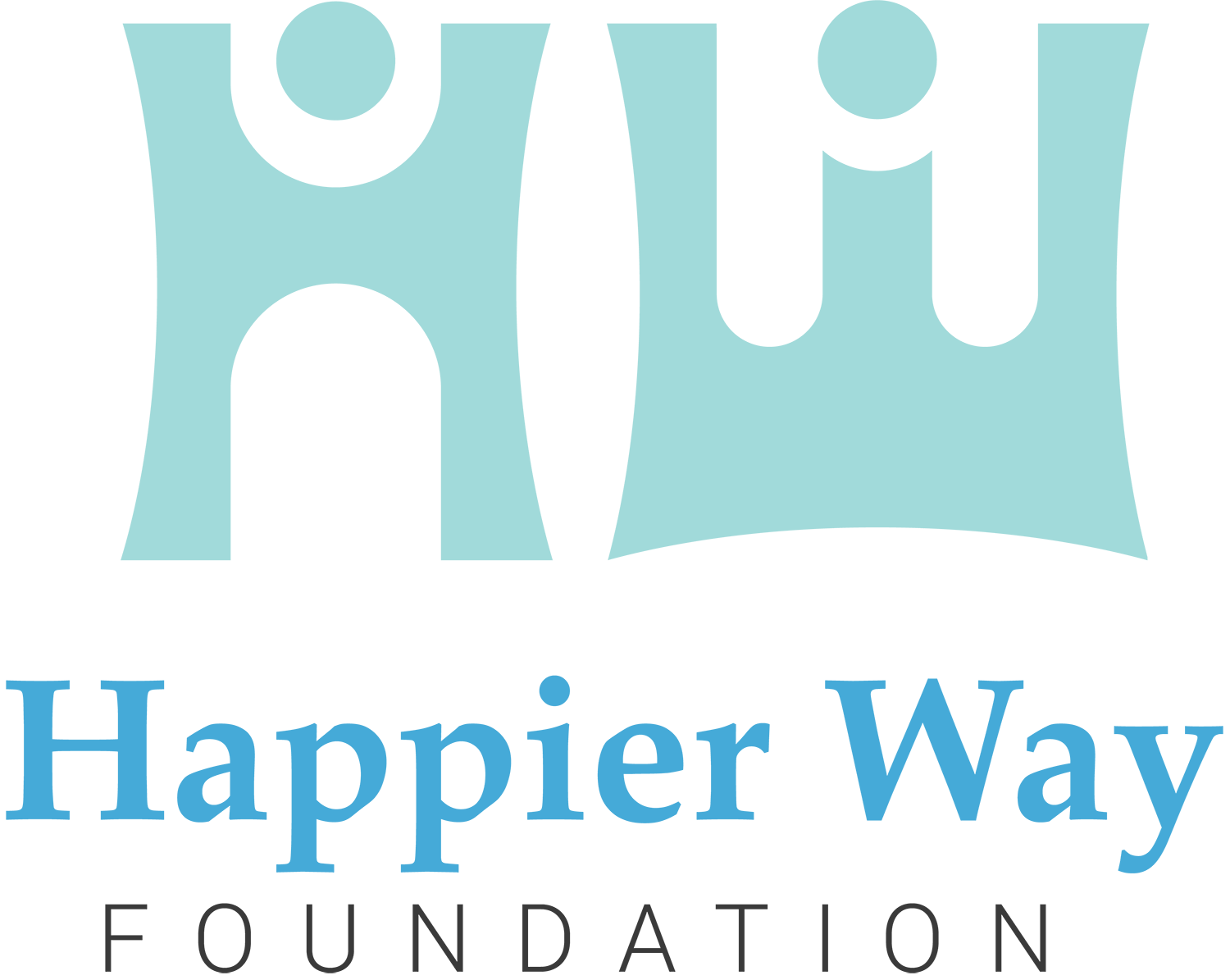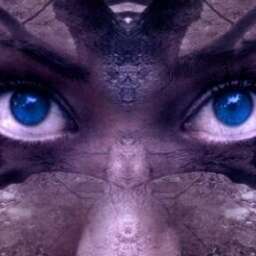[updated Jan 2021] This is the ultimate guide to Diversity Types in the Workplace in 2020. The same guide can be applied to the society, community about all aspects of diversity. The guide I will cover:
- What are the major Diversity Type Dimensions in the workplace, student life experience, and Society
- What are the four types of diversity?
- What are the major different Diversity Types in a diverse work environment, Community?
- What are some diversity examples for each diversity type?
- What is Diversity? What do we mean by diversity
- A lack of diversity can cause biases such as unconscious bias and subconscious bias
So if you want a throughout understanding of different types of Diversity in the workplace.Best on Diversity Types and Examples
- The Definitive Guide to Diversity Types in the Workplace
- Four Diversity Types Dimensions in the Workplace
- Age Diversity
- Race and Ethnicity Diversity Types
- Gender Identity
- Sexual Orientation Diversity Types
- Sexual Appearance Diversity Type
- Physical Workplace Diversity Ability & Disability
- Mental Ability & Disability in Workplace Diversity
- Neurodiversity
- Interest Diversity
- Education Diversity
- Spiritual / Religion Diversity Type
- Relationship, Mauritius, and Family Status Diversity
- Socioeconomic Diversity
- Functional Diversity at work
- What is Biodiversity?
- Diversity Glossary
Four Diversity Types Dimensions in the Workplace
There are many factors that impact our world views, some are visible to our eyes while others are indistinguishable by us; some are controllable by us while some we are born with. In general, we classify diversity into 4 major Diversity Types Dimensions. The four diversity type dimensions are Internal, External, Organizational, and World View.
Internal Diversity Types in the Workplace
Internal Diversity Types are Diversity types that are related to a person that they are born into, they are things that none of us can change (most of the cases). The definition of Internal is “relating or belonging to or existing within the person” according to Merriam-Wester Dictionary. The UN declares 30 basic human rights for every human being, diversity is embedded everywhere among the 30 rights.
The types of diversity belong to Internal includes, but not limited to:
- Race
- Age
- National Origin
- Ethnicity such as BIPOC (Black, Indigenous, Person of Color)
- Cultural Diversity
- Gender
- Sexual Appearance
- Physical Ability
- Mental Ability
All of the above internal diversity factors are something you are born with (age in a way too), that you can’t change even if you want to.
Note: Yes, you may say you can change your gender, but I will explain in more detail in the detailed section below.
External Diversity Types in the Workplace
External means “situated outside, apart, or beyond”, in the context of Diversity, it means things that are related to a person but the characteristics are not born with to the person but can be heavily influenced and controlled by us. Such diversity types are something that defines you as a person, that you or someone very close to you can help you to change or develop.
The types of Diversity belong to External includes, but not limited to:
- Interests
- Education
- Appearance
- Citizenship
- Geographic Location
- Family Status
- Spiritual / Religion
- Relationship Status
- Socioeconomics Status
- National Origin
- Experiences
All of the above External diversity types are closely related to a person yet we are able to influence or change it by acting externally.
Organizational Workplace Diversity within the workplace
We are discussing how diversity is impacting us positively in a diverse work environment. Of course, we have to talk about the factors that belong to the work or the organizations where we work.
Regardless you are working in a private, non-profit, public sector; or you work for free. You are in an organization. The organization can be consists of 2 people, or 300,000 people, as long as it has more than one person, there is some sort of organization diversity.
The types of diversity that belong to Organizational includes but not limited to:
- Job Function
- Management Status
- Work Location
- Department
- Seniority
- Union Affiliation
All of the above Organization Diversity Types belong to an organization, and we will discuss them in more detail later.
World Views
The last type of diversity is usually factors that we observe, we feel, we experience that shape our world views. Each of us has more life outside of the workplace. We travel, we have our beliefs, we embrace our culture, we have knowledge of the different types of history, we have different political beliefs and agenda.
Examples of different “world view” types of diversity are:
- Cultural events
- Politics
- History knowledge
Now we have introduced you to the four major diversity type dimensions and examples of them, in the next chapter, we will discuss each of the diverse types.
Age Diversity
Not sure I need to explain age diversity in the workplace, but it should be easy to understand that not everyone working in a workplace are of the same age. Typically we enter the workforce between the age of 18 (younger in some countries) to 30 years of age (if you are a P.h.d. or M.D., it may be older), and typically leaving the workforce voluntarily or non-voluntarily between 55 to 65 years of age. In today’s world it is not surprised to see retired or senior citizen to work and consider it part of their lives to age gracefully.
First, let us examine the distribution of age in a few countries.
Age Diversity Examples in Canada and UK
Canada, the US, Australia, and the United Kingdom all have a pretty typical age demographic distribution. Therefore statistically, there are always more workers between 35-50 in comparison to 20-35 or 50-65. You can dissect the age group in whatever way you want, the point is that there will not be an equal division of workers in terms of age or generation.
Generational Diversity Type – Generation Gap
A generation gap or generational gap Diversity is a difference of opinions between one generation and another regarding beliefs, politics, or values. We have heard of the generation gap. The population is generally divided into the following groups.
As of 2019, the breakdown by age diversity example looks like this:
- Baby Boomers: Baby boomers were born between 1944 and 1964. T
- Gen X: Gen X was born between 1965 – 1979.
- Gen Y: Gen Y, or Millennials, were born between 1980 and 1994.
- Gen Z: Gen Z is the newest generation to be named and was born between 1995 and 2015.
Different generation group works and thinks different, at different stages of life with different priorities. I will discuss more of each age generation group in a different post.
Race and Ethnicity Diversity Types
A race is a grouping of humans based on shared physical or social qualities into categories generally viewed as distinct by society. The term was first used to refer to speakers of a common language and then to denote national affiliations. By the 17th century, the term began to refer to physical (phenotypical) traits. Modern scholarship regards race as a social construct, an identity that is assigned based on rules made by society. While partially based on physical similarities within groups, race does not have an inherent physical or biological meaning. Other includes National cultures, societal cultures that span nations (e.g., Arab culture), regional cultures within nations (e.g., Bengali and Punjabi cultures in India), hybrid, and intersecting cultures (e.g., Métis indigenous culture). The impact of race and ethnicity can impact equality in the workplace, sometimes known as the glass ceiling at work.
- Asian. A person having origins in any of the original peoples of the Far East, Southeast Asia, or the Indian subcontinent including, for example, Cambodia, China, India, Japan, Korea, Malaysia, Pakistan, the Philippine Islands, Thailand, and Vietnam. Asian is usually considered BIPOC
- Black or African . A person having origins in any of the black racial groups of Africa. Terms such as “Haitian” or “Negro” can be used in addition to “Black or African American.”
- Hispanic or Latino. A person of Cuban, Mexican, Puerto Rican, South or Central American, or other Spanish culture or origin, regardless of race. The term, “Spanish origin,” can be used in addition to “Hispanic or Latino.”
- Indigenous. Indigenous is defined as “originating or occurring naturally in a particular place.” Indigenous can be used to define species of plants and animals that originated in a particular place. It is also used more broadly to refer to native people, those who were here first.
- White. A person having origins in any of the original peoples of Europe, the Middle East, or North Africa.
USA Race Diversity Statistics
| Race and Hispanic Origin | |
|---|---|
| White alone, percent | 76.3% |
| Black or African American alone, percent | 13.4% |
| American Indian and Alaska Native alone, percent | 1.3% |
| Asian alone, percent | 5.9% |
| Native Hawaiian and Other Pacific Islander alone, percent | 0.2% |
| Two or More Races, percent | 2.8% |
| Hispanic or Latino, percent | 18.5% |
| White alone, not Hispanic or Latino, percent | 60.1% |
United States Census
Canada population by Race Diversity
Response type | ||
|---|---|---|
| Single response | Multiple response | |
| Canadian | 6,436,940 | 4,699,030 |
| English | 1,098,930 | 5,221,155 |
| Scottish | 475,580 | 4,323,430 |
| French | 1,006,180 | 3,664,415 |
| Irish | 457,905 | 4,169,095 |
| German | 569,655 | 2,752,750 |
| Chinese | 1,439,980 | 329,215 |
| Italian | 695,415 | 892,545 |
| First Nations (North American Indian) | 526,565 | 999,005 |
| East Indian | 1,096,850 | 277,865 |
| Ukrainian | 273,815 | 1,085,845 |
| Dutch | 289,675 | 821,980 |
| Polish | 264,415 | 842,170 |
| Filipino | 651,390 | 185,740 |
| British Isles origins | 132,830 | 511,865 |
| Russian | 120,170 | 502,280 |
| Métis | 91,255 | 508,740 |
| Portuguese | 264,820 | 217,790 |
| Welsh | 25,190 | 449,615 |
| Norwegian | 35,905 | 427,370 |
Stats Canada
| Origins | First generation | Second generation | Third generation or higher |
|---|---|---|---|
| percent | |||
| Asian origins | 69.4 | 26.5 | 4.1 |
| African origins | 62.5 | 31.0 | 6.5 |
| Latin, Central or South American origins | 58.1 | 35.4 | 6.5 |
| Caribbean origins | 47.9 | 41.5 | 10.6 |
| Oceania origins | 36.6 | 39.8 | 23.5 |
| Total population | 23.9 | 17.7 | 58.4 |
| European origins | 15.1 | 19.9 | 65.1 |
| Other North American origins | 2.0 | 10.0 | 88.0 |
| North American Aboriginal origins | 1.3 | 5.7 | 93.0 |
Gender Identity
Typically Gender refers to where you feel that you personally fall on the spectrum between male and female. One’s innermost concept of self as male, female, a blend of both or neither – how individuals perceive themselves and what they call themselves. One’s gender identity can be the same or different from their sex assigned at birth. Commonly people identify as male or female, but some fall in the middle or move throughout the spectrum. An important way to address gender is to address gender bias.
Types of Identity
Sex– Your assigned gender at birth and/or the gender of your reproductive organs
Gender– Where you feel that you personally fall on the spectrum between male and female. Commonly people identify as male or female, but some fall in the middle or move throughout the spectrum.
Cisgender– When you identify with the gender you were assigned at birth
Transgender– A term that describes a person whose gender identity does not match their assigned sex. For example, someone who was assigned female at birth who identifies as male. Transgender people may alter their bodies using hormones, surgery, both or neither. When you identify with a gender different than that you were assigned at birth
Transsexual– When you have had Gender Reassignment Surgery (GRS) to change the sexual organs you were born with to that of a different gender.
Genderqueer A way of describing one’s gender that does not include the current definitions of “man” or “woman.” Not all genderqueer people are trans.
Sexual Orientation Diversity Types
Sexual Orientation refers to who you are sexually attracted to meaning who you get turned on by or who you would want to engage in sexual behaviours with. An inherent or immutable enduring emotional, romantic or sexual attraction to other people.
Here are a sample list and a basic description of different types of sexual orientations.
- Asexual A sexual orientation. An umbrella term for people who don’t feel sexual attraction. Asexual people can have intimate emotional and intellectual relationships.
- Gay Being sexually and romantically attracted to people of the same gender as you.
- Homosexual Also known as gay, lesbian, or queer. A historically derogatory term that refers to being sexually and romantically attracted to a person of the same sex or gender. It’s best not to use this term unless that is how a person defines themselves.
- Pansexual A person who is attracted to people from across the gender spectrum.
- Bisexual A person who is attracted to people of more than one gender.
- Heterosexual Being sexually and romantically attracted to someone of a different gender. Typically this applies to the male/female gender binary.
- Intersex A person born with a combination of genitals and/or chromosomes that are different from the medically defined “male” or “female” identities.
- Lesbian A woman who is sexually and romantically attracted to other women. A type of sexual orientation.
- Omnisexual A person who is attracted to people from across the gender spectrum. Similar to pansexual. Omnisexual people recognize potential partner’s genders, are attracted to all genders, and make decisions about partners based on their gender
- Two Spirit A sexual and gender minority identity specific to Indigenous cultures. Two Spirit people hold masculine and feminine spirits. Before colonization, Two Spirit people were respected in many Indigenous communities and played valuable roles as educators, healers and leaders. After colonial contact, Two Spirit people were abused and assaulted.
- Questioning Someone who is not sure what their sexual orientation is and is going through the process of figuring it out. People who are questioning are still valid in their identity.
Interested LGBTQ or LGBT?
Visit our Complete LGBT Q&A libraryLearn about LGBTQ
Some sexual orientation groups will always be a minority compared to heterosexuals. For example, in the United Kingdom sexual orientation data in 2018, just over 1 million (2.0%) of the UK population aged 16 and over identified themselves as lesbian, gay, bisexual, and transgender(LGBT). The population aged 16 to 24 were the age group most likely to identify as LGBT in 2016 (4.1%). More males (2.3%) than females (1.6%) identified themselves as LGBT in 2017. The population who identified as LGBT in 2017 were most likely to be single, never married or civil partnered, at 70.7%.
Sexual Appearance Diversity Type
Sexual Appearance and expression refer to how a person chooses to express themselves. For example, a straight man may choose to express himself as a women’s gender and wear women’s clothes, and sexually attracted to women, as well as romantically orient to women other than his expression preferences.
Physical Workplace Diversity Ability & Disability
Physical Disabilities and ability and is the capacity to do tasks that demand stamina, desired, strength and similar characteristics. The common characteristic in physical disability is that some aspect of a person’s physical functioning, usually either their mobility, dexterity, or stamina, is affected. People with physical permanent disabilities are usually experts in their own needs and will understand the impact of their disability. It can identify individuals who are physically able to perform the essentials function of a job without risking injury to others. There are many different kinds of disability and a wide variety of situations people experience. The disability may be permanent or temporary. It may exist from birth or be acquired later in life. People with the same disability are as likely as anyone else to have different abilities.
Mental Ability & Disability in Workplace Diversity
Mental health is defined as a state of well-being in which every individual realizes his or her own potential, can cope with the normal stresses of life, can work productively and fruitfully, and is able to make a contribution to her or his community. We cannot discriminate people with mental health at work, and the employer should do all they can to accommodate a person’s mental health issues.
Neurodiversity
A subtype of mental ability, Neurodiversity is fortunately getting more attentions in recent years. Neurodiverse people typically needs some accommodations. Examples of Neurodiversity types are Dyspraxia, Dyslexia, Attention Deficit Hyperactivity Disorder, Dyscalculia, Autistic Spectrum, Tourette Syndrome, and others.
Interest Diversity
Everyone has different interests. Someone who has a hobby in Video Gaming would have a different view than someone who loves to read; some may have both or in neither too. Having different interests may be reasons certain people are interested in one project over the other.
Education Diversity
People have an educational background for different people in an organization. Typically they are:
High School Programs is usually the lowest level of education in today’s workforce.
Associate-level programs offer different degrees for a variety of careers. These 2-year programs may provide the necessary training to prepare students for entry-level positions in fields like trades, nursing, graphic design, and other vocational areas. Associate degree programs are most commonly available from community colleges and technical schools.
bachelor’s degree programs are undergraduate programs that usually take four years to complete. Enrolling in a bachelor’s degree program requires that students choose a major area of studies, such as finance, history, communications, or biology. Graduates from a bachelor’s degree program are qualified to work in entry- or management-level positions, depending on the field.
Master’s degree programs are graduate programs that let students specialize in an area of study. They typically take 1-2 years to complete.
The highest college degrees are doctoral degree programs, also known as Ph.D. programs. Because they are the most advanced type of degree program available, admittance into a doctoral degree program may require individuals to hold a master’s degree, although several programs accept candidates who only hold bachelor’s degrees.
Spiritual / Religion Diversity Type
In multicultural countries like Canada, Australia, USA, UK, Australia, there are likely over 50 religions and 5 are considered the major ones.
- Christianity (2.4B people)
- Islam (1.9B people)
- Hinduism (1.1B People)
- Buddhism (0.52B People)
- Judaism (0.15B people)
- and other folk religions.
There is a longer list of religions below in the FAQ section.
The distribution of religious groups varies considerably. Several religious groups are heavily concentrated in the Asia-Pacific region, including the vast majority of Hindus (99%), Buddhists (99%), adherents of folk or traditional religions (90%) and members of other world religions (89%).
Relationship, Mauritius, and Family Status Diversity
The next type of diversity is related to the family and the relationship of the close one around a person. Marital status is a legally defined marital state. There are several types of marital status: single, married, widowed, divorced, separated and, in certain cases, registered partnership.
On the other hand, Family Status is defined as “the status of being in a parent and child relationship.” This can also mean a parent and child “type” of relationship, embracing a range of circumstances without blood or adoptive ties but with similar relationships of care, responsibility and commitment. For example, if someone has to work around the schedule because she/he/they have to take care of an elderly mother, the employer should try their best to accommodate such needs.
Socioeconomic Diversity
Socioeconomic diversity is a bit of a combination of Income, Education, and Occupation. We will discuss more when we talk about organizational diversity types.
Socioeconomic Status diversity is a big topic of its own, it could include many things like where you live, who you network with. We won’t go into too many details on this post, however, there is an example of socioeconomic that I believe are born into, which is the Indian caste system. It is one of the world’s oldest form of surviving stratification. It is an ancient system that you can’t change. At the top of the hierarchy were the Brahmins who were mainly teachers and intellectuals and are believed to have come from Brahma’s head. Then came the Kshatriyas, or the warriors and rulers, supposedly from his arms. The third slot went to the Vaishyas, or the traders, who were created from his thighs. At the bottom of the heap were the Shudras, who came from Brahma’s feet and did all the menial jobs.
For companies in the west, we may not have many details about these caste systems but we should keep it in mind that they exist. For example if you are recruiting in Indian you want to make sure your teams or the hiring manager doesn’t allow the caste system to affect the hiring decision.
Functional Diversity at work
Functional or organization diversity means the differences between people that are assigned or given by the organization. Some of the diversity types at work include:
- Job Function
- Management Status
- Work Location
- Department
- Seniority
- Union Affiliation
Almost all of the above are self-explanatory, the more important point is that everyone has different thoughts and priorities because of the different roles and responsibilities. In today’s modern business world, diversity is becoming a standard requirement to a company’s brand reputation, and it is not only someone a company claims that they are doing, the company needs to really do it to have the right brand perceptions.
What is Biodiversity?
Biodiversity is a common enough word that almost every one of us has heard it before. We know it concerns the many forms of life on Earth, existing in many parts of the world. But what does biodiversity mean and why should it matter to us? You can read about our research and comprehensive write up of Biodiversity
The three types of Biodiversity are:
You may also be interested in our write up about natural rights.
Diversity Glossary
| Key Term | Definition to use in the game |
|---|---|
| diversity | The presence of difference and uniqueness |
| inclusion | A state where all people feel respected and valued as participants |
| stereotype | A generalization, usually exaggerated or oversimplified and often offensive, that is used to describe or distinguish a group. |
| bias | a tendency, trend, inclination, feeling, or opinion, for or against someone or something, especially one that is preconceived or unreasoned |
| inequity | A lack of fairness |
| micro-inequity | apparently small events which are often hard-to-prove, events which are covert, often unintentional, frequently unrecognized by the perpetrator, which occur wherever people are perceived to be ‘different’ |
| barriers | Processes, systems, and/or attitudes that prevent people from accomplishing what they wish to accomplish |
| Power relations | The ways in which people use their positions and/or influence to control people, systems, and/or behaviour |
| intersectionality | the interconnected nature of social categorizations such as race, class, and gender as they apply to an individual or group, and which create overlapping and interdependent systems of discrimination or disadvantage. |
| Intercultural competence | the ability to interact effectively and appropriately with people who are different than us |
From https://diversity.social/workplace-diversity-types/














